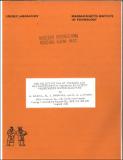| dc.contributor.author | Kamal, Altamash | en_US |
| dc.contributor.author | Driscoll Michael J. | en_US |
| dc.contributor.author | Lanning David D. | en_US |
| dc.contributor.other | Massachusetts Institute of Technology. Energy Laboratory | en_US |
| dc.contributor.other | Massachusetts Institute of Technology. Department of Nuclear Engineering | en_US |
| dc.date.accessioned | 2014-09-15T18:12:54Z | |
| dc.date.available | 2014-09-15T18:12:54Z | |
| dc.date.issued | 1982 | en_US |
| dc.identifier.uri | http://hdl.handle.net/1721.1/89571 | |
| dc.description | Includes bibliographical references (pages 315-318) | en_US |
| dc.description.abstract | Systematic procedures have been developed and applied to assess the uranium utilization potential of a broad range of options involving the selective use of thorium in Pressurized Water Reactors (PWRs) operating on the once-through cycle. The methods used rely on state-of-the-art physics methods coupled with batch-wise core depletion models based on the "group-and-one-half" theory. The possible roles for thorium that were investigated are: as internal and radial blanket material, as thorium pins dispersed within uranium fuel assemblies, its use in PWRs operating on spectral shift control, and its reconstitution and reinsertion as radial blanket assemblies. The use of smaller assemblies in PWRs (for cores with and without thorium) was also investigated, as well as options which can be regarded as reasonable substitutes for employing thorium. The analyses were performed for both current (3-batch, discharge burnup n 30 GWD/MT) and high-burnup (5!
-batch, discharge burnup% 50 GWD/MT) PWR cores in their steady-state. It was found that except for special circumstances (dry lattices and/or high burnup), the use of thorium does not save uranium compared to the conventional all-uranium PWRs. When savings are achieved (typically 1-3%, but as high as 9% in special circumstances), they can be, for the most part, equaled or exceeded by easier means: in particular, by the re-use of spent fuel. On the other hand, up to 15 or 20% thorium could be added into PWRs without significant losses in uranium utilization, if policies called for the build up of a U-233 inventory for later use in the recycle mode. It was also found that, regardless of the deployment of thorium, the use of smaller fuel assemblies with the concurrent deployment of radial blankets is an effective uranium conservation strategy, with accompanying power-shaping advantages. | en_US |
| dc.description.sponsorship | Division of Energy Technology, U.S. Dept. of Energy. DE-AC02-79ET34022 | en_US |
| dc.format.extent | 318 pages | en_US |
| dc.publisher | Cambridge, Mass. : Massachusetts Institute of Technology, Energy Laboratory, 1982 | en_US |
| dc.relation.ispartofseries | Energy Laboratory report (Massachusetts Institute of Technology. Energy Laboratory) ; no. MIT-EL 82-033 | en_US |
| dc.relation.ispartofseries | MITNE ; no. 253 | en_US |
| dc.subject.lcc | TK1001.M41 E56 no.82-033 | en_US |
| dc.subject.lcc | TK9008.M41 N96 no.253 | en_US |
| dc.subject.lcsh | Pressurized water reactors -- Cores | en_US |
| dc.subject.lcsh | Light water reactors | en_US |
| dc.subject.lcsh | Thorium | en_US |
| dc.subject.lcsh | Nuclear fuel elements | en_US |
| dc.title | The selective use of thorium and heterogeneity in uranium-efficient pressurized water reactors | en_US |
| dc.title.alternative | Uranium-efficient pressurized water reactors, The selective use of thorium and heterogeneity in | en_US |
| dc.type | Technical Report | en_US |
| dc.identifier.oclc | 10661914 | en_US |
